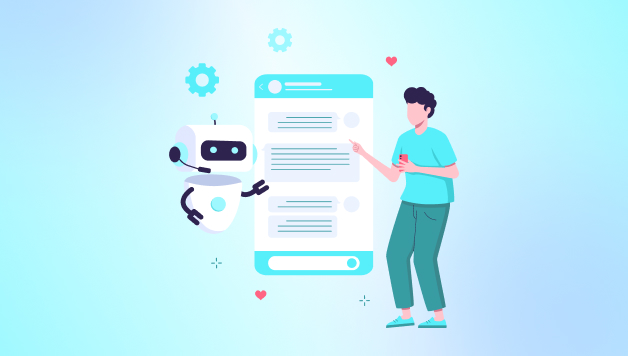The world of AI for texting is evolving rapidly, and one of the most groundbreaking shifts is the development of AI chatbots that learn without traditional AI training data. These new systems, often referred to as data-free AI, are designed to function efficiently with little to no labeled input data—challenging the norm and introducing new possibilities.
The Shift from Traditional AI Training
Traditional AI training depends heavily on large datasets. This data is essential for teaching models how to interpret language, predict user intent, and generate responses. However, this method comes with notable AI training challenges, including:
- Time-intensive data labeling
- Data privacy concerns
- Expensive infrastructure and compute requirements
- Limited access to diverse datasets
Data-free AI seeks to overcome these obstacles by minimizing or eliminating the reliance on pre-collected and labeled data.
What Is Data-Free AI?
Data-free AI refers to systems that use alternative learning methods to function effectively without training on conventional datasets. Instead of feeding these models thousands or millions of text samples, they are designed to:
- Learn through logic-based models
- Adapt via reinforcement learning and user interaction
- Utilize synthetic data generation
- Integrate pre-learned linguistic rules
This shift supports faster development cycles and makes AI more accessible to smaller companies or startups that may not have access to extensive training data.
How AI Chatbots Are Evolving
With AI training methods advancing, the next-generation chatbots are becoming more capable in areas previously dependent on vast data pools. Here’s how they’re improving:
1. Real-Time Adaptation
New AI chatbots can learn in real-time by interacting with users, identifying patterns, and adjusting behavior accordingly. This means that over time, the bot becomes more efficient without needing a separate AI training phase.
2. Transfer Learning
Rather than training from scratch, many AI systems now use pre-trained models and adapt them to specific tasks. This minimizes data dependency while still delivering quality performance.
3. Integration with Knowledge Graphs
By connecting to knowledge graphs, chatbots can pull structured information in real-time, reducing the need for predefined data during development.
4. Ethical and Secure Operation
By moving away from traditional training methods, AI chatbot development services can better address privacy and data security concerns. These systems are less likely to be exposed to sensitive or biased data sources.
The Benefits of Data-Free AI
Implementing data-free models offers several advantages:
- Faster Deployment: Without extensive training data, AI systems can be deployed more quickly.
- Cost Reduction: Less need for manual data collection and labeling means reduced development costs.
- Improved Privacy: Eliminating the need to store user data enhances privacy and compliance with data protection laws.
- Scalability: Easier to adapt across different industries and use cases without retraining from scratch.
AI Training Challenges That Still Exist
Despite the promise of data-free models, some challenges persist:
- Ensuring quality and relevance without real-world data
- Managing bias and fairness in models lacking diverse examples
- Balancing model simplicity with performance
- Avoiding overfitting on synthetic or generated data
These issues highlight the importance of continued research and innovation in the AI space.
Use Cases of AI Without Training Data
AI chatbots that bypass conventional methods are already finding real-world applications:
- Customer service in industries with strict data privacy regulations
- Educational platforms that personalize learning on the go
- Healthcare chatbots offering support without handling sensitive patient data
- Enterprise tools that learn from in-app user actions
Such applications demonstrate the broad potential, especially in high-security or low-data environments.
Conclusion
The future lies in smarter, more adaptable, and less data-reliant systems. By breaking away from the traditional model, data-free AI paves the way for faster innovation and wider adoption. Though challenges still need attention, especially around bias and quality, the benefits of this new approach are clear.
For businesses looking to stay ahead, partnering with the right providers can be a strategic move. These experts understand the latest trends and can guide organizations through integrating data-efficient technologies.
Ultimately, as AI continues to evolve, the demand for data-light solutions will only grow, positioning data-free AI as a key player in the next era of intelligent digital communication.
